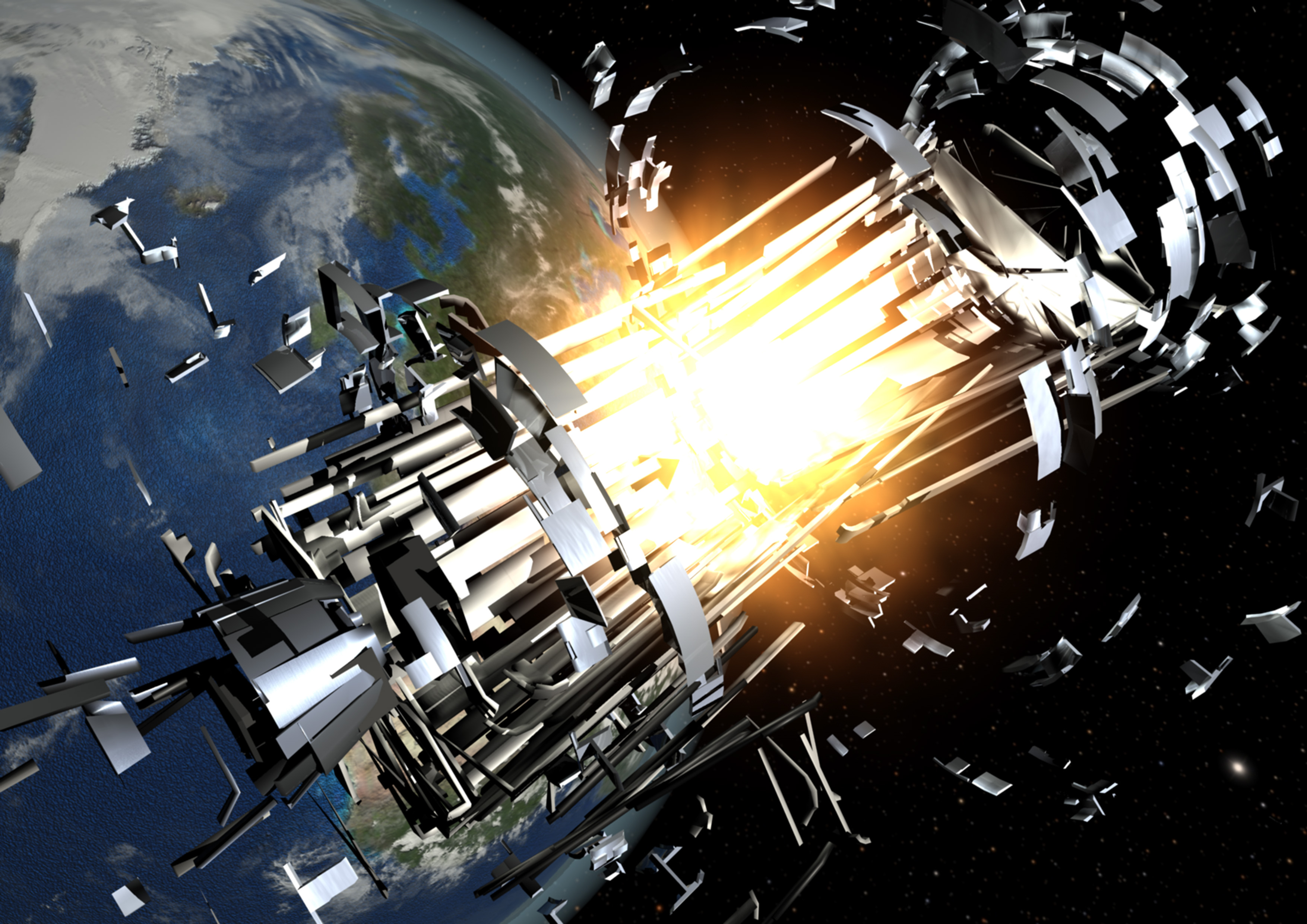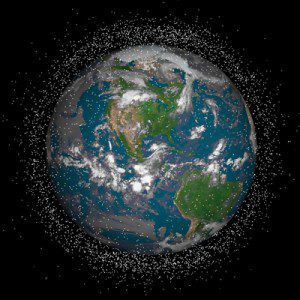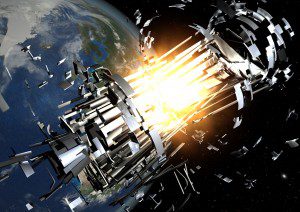
14 Sep EARTH MATTERS: SPACE JUNK
The mantra remains the same: “Out of sight, out of mind.” Looking up towards the heavens, I see the brilliance of star clustered-galaxies as far as the eye can see. However, what my limited vision does not see would make a grown man cry. If our human-centric society treats the Earth’s ocean environment like a dark corner of a basement, forgotten and full of garbage, then the space above Earth must be like an attic crammed full of space junk discarded over decades.
The production of man-made artifacts orbiting our planet began in the early years of the space age when explosive charges separated rocket stages and hurled a cloud of shattered debris above Earth’s upper atmosphere. Compounding the problem, propellant contained in the upper stages of these rockets would explode and create additional space junk. According to Walter Flurry of the European Space Agency, the first upper stage rocket explosion occurred in 1961 and produced 296 catalogued pieces of debris. As of 2001, 191 pieces of debris from this event are still orbiting Earth.
Although the US Space Surveillance Network and the MIT Lincoln Laboratory’s Haystack Long Range Imaging Radar attempts to track debris and has cataloged tens of thousands pieces of junk, these observations are ad hoc at best. Hence, it is very likely that tens of thousands pieces of debris go unnoticed. However, the critical problem with space debris regardless of its size is its velocity. The average collision velocity between orbiting objects fluctuates around 10 km/s in Earth’s low orbit; this equates to a one gram object having the same impact force as a one ton car traveling at 10 m/s. Consequently, the likelihood of orbiting debris causing substantial damage to satellites or other important assets has been estimated to lie between 10-6 and 10-5. In other words, space junk poses a significant risk to commercial satellites and NASA’s space program.
In 1993, a NASA space shuttle returned with a solar array panel from the Hubble Space Telescope that was riddled with over 150 holes ranging from approximately 0.1μm to 7mm in diameter due to collisions with  space junk. Just imagine the nightmares of the astronauts sleeping aboard the International Space Station (ISS) as they negotiate a landfill of human waste above Earth.
space junk. Just imagine the nightmares of the astronauts sleeping aboard the International Space Station (ISS) as they negotiate a landfill of human waste above Earth.
Although atmospheric drag in Earth’s lower orbit serves as a clearing mechanism for a portion of the debris, the decay time above 850 km in the geostationary orbit is measured in centuries. Consequently, at our current rate of discarding waste into Earth’s orbit, some parts of space could be ‘off-limits’ to human exploration and communication satellites within 50 years.



Sorry, the comment form is closed at this time.